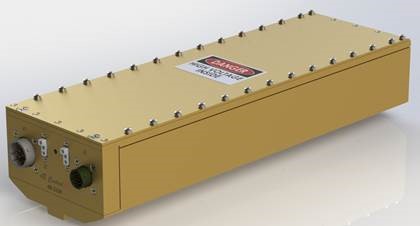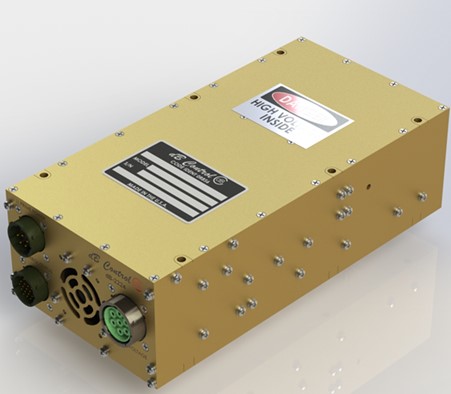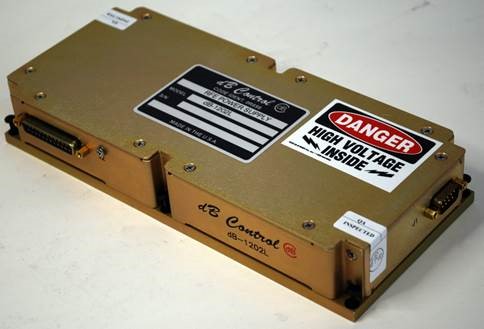By Robert Richardson, dB Control
When sourcing low- and high-voltage power supplies for either military or commercial applications, system design engineers must choose between commercial off-the-shelf (COTS) products or units built to custom specifications. However, misunderstandings abound regarding the cost of each option — in terms of both initial price and total cost of ownership — as well as delivery timelines, ease of integration, and real-world performance.
Understanding the pros and cons of COTS versus custom power supplies helps engineers make timely, defensible decisions about the products they implement in their projects. This knowledge is particularly consequential in military applications, where size, weight, power, and cost (SWaP-C) requirements usually are inflexible.
A commercial application is more likely to be set up in a controlled environment, where operating space and power draw are not as critical. Form factors tend to be typical (standardized, even). Conversely, military applications often require unique form factors to ensure proper fit on the platform, precise weights to maximize flight longevity, and strict center of gravity requirements, as well as near-infallible reliability to preserve operation in scenarios where human lives are at stake. Each application is different; what remains constant is that power supply parameters already have been figured into the engineer’s design.

Custom Low Voltage Power Supply
COTS Often Falls Short Of Its Promise
COTS power supplies generally are faster to procure than custom power supplies, but redesigning and customizing packaging to accommodate COTS designs may cause delays in the form of multiple restarts or customer requests for waivers. Consider that the integration task begins by determining and designing the external circuity required for operation and protection of the power supply. Next, a PCB must be designed to integrate the external circuity before thermal management solutions are analyzed and designed. Finally, designers must find a way to mount the whole assembly into its intended enclosure.

Conduction Cooled Decoy High Voltage Power Supply
Purchasers are limited to predefined voltage/power/temperature/performance ranges, as well as form factors and heat management. A one-size-fits-all power supply often forces system cooling and mechanical layout to be designed around the power supply, and the power supply usually has to be overrated (size/cost) for the application. Even if the unit’s predefined ranges fall within the application’s needs, they are not optimizing SWaP-C.
Additionally, the data sheets and reference designs accompanying most COTS products (outlining their performance parameters) can be imprecise or convoluted. For example, heat dissipation usually is overlooked (or deliberately buried) in the data sheets, making implementation seem straightforward even though achieving the promised performance often requires significant analysis and design work.
This is because the numbers on the front of those data sheets represent best-case scenario — analogous to the mileage sticker on the window of a new vehicle. The COTS power supply can conceivably achieve the stated performance, but perhaps it has to be kept at a constant cool temperature or operate under a precise load. The data sheet’s last page might contain a curve hidden amongst a hundred others that indicates operating at a higher-than-optimal temperature leads to only half the stated output power noted on the front of the data sheet.
In terms of price, based solely on raw materials and components, COTS always will be less expensive up front than a custom power supply. However, after additional design time and multiple iterations of the final assembly to hash out any bugs, custom designs surpass COTS as the better value overall — particularly in military and defense applications.
How Custom Power Supplies Package Fit, Function, And Value
One of the biggest misconceptions about custom power supplies is that they take too long to procure; they have to be designed from scratch and lead times are prohibitive. While custom power supply timelines ultimately depend on the application requirements (e.g., SWaP-C and operating environment demands), dB Control regularly completes difficult designs and ships a first unit within six months.

Air Cooled Decoy High Voltage Power Supply
dB Control has applied a modular architecture to our power supplies for more than 15 years, allowing us to create and modify designs quickly using modules that have been MIL-qualified to EMI DO-160, MIL-STD-461, MIL-STD-704E, and MIL-STD-810E guidelines, as well as field-proven. Very little, if anything, has to be designed from scratch. We know each module’s capabilities and the applications it is designed for, from low-voltage up to 40kV systems. These modules operate at power ranges from 100W to 1.2kW average, and up to 90 kW pulsed, with efficiency typically >90%, while utilizing any combination of high- and low-voltage inputs/outputs.
We continually create and approve new modules that improve upon SWaP-C, drawing on a library of designs that dates to the company’s 1990 inception. Typically, customers requesting a preliminary design review within 30 days of placing an order are awed by the details we already can share with them, as well as how close early iterations of the custom design are to their requirements.
dB Control has extensive documentation to help support qualification-by-similarity (Qual-by-Sim) opportunities. Whether the client’s application demands uncompromising electrical performance, electromagnetic interference/electromagnetic compliance (EMI/EMC) qualification, or survivability in extreme temperature changes, we have tested each module to comply with a wide range of regulations, from benign environments to the most severe airborne, shipboard, and ground mobile environments.
Each operating environment presents different challenges, whether it is temperature extremes (shifting from very cold to very hot), extreme vibration/shock, EMI, EMC, fungus growth, dust/dirt, high humidity, severe weather (e.g., for a unit mounted on an outdoor antenna), pressures from altitude, and decompression shock — to name just a few. Often, we’re able to create a report for clients showing the similarities between their product and previously qualified modules, saving that client significant time and money on qualification testing.

Conduction Cooled Low Voltage Power Supply
This design-to-fit approach does not end after the initial order. When we receive initial specifications, the customer‘s requirements may still be evolving. Thus, the specifications can change during design: perhaps the load manufacturer updates its voltage or current requirement during development, or excessive margin was built into the initial spec and SWaP can be improved. Often, a COTS solution cannot accommodate this change in requirements, forcing the designer to start again from scratch. Alternately, dB Control’s custom solutions are easily reconfigured through an engineering process that constantly works toward fine-tuning the unit to the client’s exacting requirements — even if that means venturing into the field and modifying units on the customer’s platform, at their site.
That unwavering technical support is at the heart of dB Control custom products’ advantages over COTS. Every customer question is answered pre- and post-design; we typically have weekly or bi-weekly technical interchange meetings with our clients, so no surprises accompany delivery of the first unit. COTS product support generally is limited to reference documentation, which is not all-inclusive.
When dB Control begins a custom power supply project, we assign a program manager, a single point of contact for queries into engineering, schedules, etc. Additionally, clients have direct access to our VP of engineering who — after 30+ years with dB Control — knows our products inside and out. This unparalleled access and ease of communication drives our clients’ success, whether the project is a one-off or a long-term collaboration.
Final Thoughts
Application-specific or custom power supplies do not need to be cost prohibitive or require extensive lead times. Custom dB Control solutions begin with technical discussions before moving to preliminary design review (PDR), critical design review (CDR), and pre-production review to ensure SWaP-C requirements are met. Constant communication and collaboration with our clients also guarantee our products are delivered within budget and on-time with no surprises.
dB Control provides dedicated engineering resources from start to finish, versus COTS products that offer inadequate (if any) support, leaving engineers to rely on white papers and trial-and-error to jam a generalized product into a specific application. Additionally, tech support does not end for dB Control clients after the sale, adding the potential for design mods and enhancements after the design is finalized, whereas COTS unit designs are fixed and are not customizable at any stage. Often, clients who have struggled to implement a reference design end up turning to a custom-designed product after wasting valuable time and money on a COTS solution.
For more information about specific products, please email info@dBControl.com
About dB Control
Established in 1990, dB Control Corp. supplies mission-critical, often sole-source, products worldwide to military organizations, as well as to major defense contractors and commercial manufacturers. dB Control is a subsidiary of the Electronic Technologies Group of HEICO Corp., a publicly-traded aerospace and electronics company with more than 60 subsidiaries. dB Control designs and manufactures reliable high-power TWT Amplifiers (TWTAs), microwave power modules (MPMs), transmitters, high- and low-voltage power supplies, and modulators for radar, electronic countermeasures (ECM), and data link applications. The modularity of dB Control’s designs enables rapid configuration of custom products for a variety of platforms, including ground-based and high-altitude military manned and unmanned aircraft. Acquisitions in 2019 (TTT-Cubed, Inc.) and 2021 (Paciwave, Inc.) have added the following to the company’s product offerings: custom RF sources and receivers, RF and microwave components and integrated microwave subsystems. The company also offers specialized contract manufacturing and repair depot services from its modern 40,000-square-foot facilities in Fremont, California. dB Control is AS9100D and ISO 9001:2015 certified.


